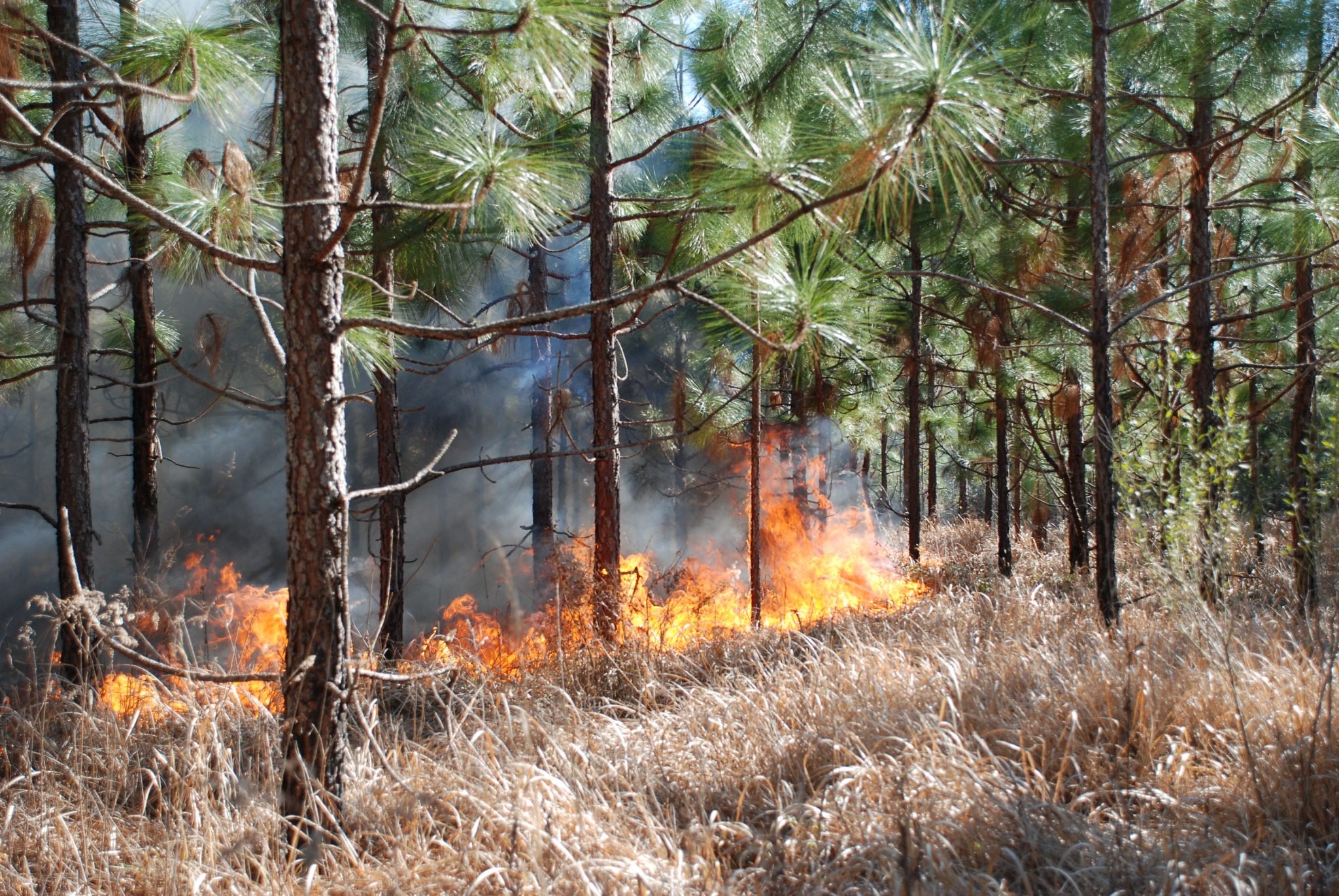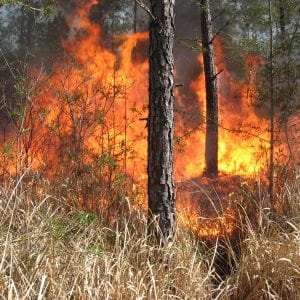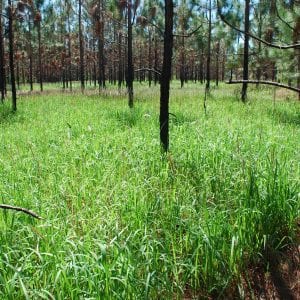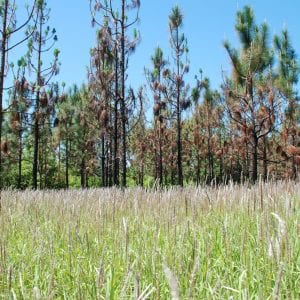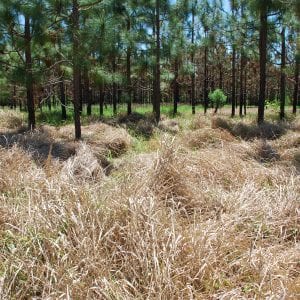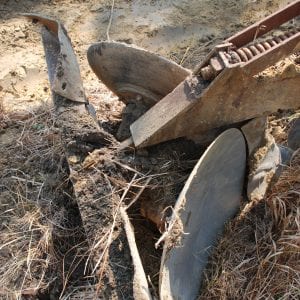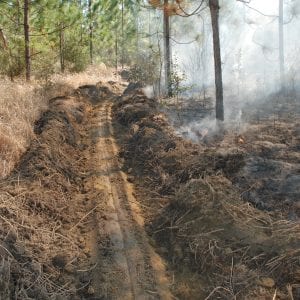Forestry & Wildlife

Cogongrass (Imperata cylindrica) is a significant invasive threat in Alabama and throughout the southeastern United States. In addition to crowding out other plants, its dense growth and leaf characteristics allow cogongrass to burn hotter than most native grasses.
Cogongrass often grows in areas prone to wildfire and where prescribed fire is regularly used as a management tool. This can create challenges for forest management and the use of prescribed fire.
Fire Characteristics
- Cogongrass burns exceptionally hot (figure 1) at significantly higher temperatures than native grasses. This is due, in large part, to the greater amount of dead biomass (thatch) buildup associated with cogongrass compared to buildup in native grasses.
- Cogongrass benefits from fire. The rhizomes (underground stems) resprout very quickly and aggressively following a fire (figure 2) and often come in more densely than before the fire. Flowering is promoted by winter fires (figures 3 and 4), and the seed, which needs mineral soil to germinate, can establish more easily on ground cleared by fire.
- Other plants growing with cogongrass are typically knocked back or killed by hot cogongrass fires. Even plants that are adapted to fire can be killed, especially with frequent fires.
- Figure 1. Cogongrass fires burn hot! Note the dense thatch in the foreground.
- Figure 2. Cogongrass sprouts back quickly after a fire. One month post fire, cogongrass is over 1 foot tall.
- Figure 3. Cogongrass flowering can be stimulated by winter burning. Note the injured pine trees in the background.
Fire and Cogongrass Control
- Fire alone cannot be used to control cogongrass because fire tends to promote its spread.
- Fire can help with cogongrass control when combined with other treatments. Burning off the thatch promotes lush aboveground growth that briefly weakens the rhizomes. Thus, burning before tillage treatments or spring herbicide treatments results in more effective control. Allow at least 12 to 18 inches of regrowth before herbicide treatment or control may be poor. Treating the regrowth before flowering may suppress flower and seed development and help reduce spread. Learn more at Cogongrass Management FAQ on the Alabama Extension website.
- When using herbicides, always read and follow the herbicide label directions.
Fire and Cogongrass Spread
- Equipment used to construct and maintain firebreaks or fight fires (fire plows, bulldozers, etc.) can spread rhizomes and seeds (figures 5 and 6).
- Inspect and clean equipment before leaving an infested site and before it comes on your property. (See Cogongrass Hitchhikers on the Alabama Extension Website.)
- Inspect firebreaks and roads for new cogongrass spots and treat immediately.
- Figure 4. This is the same site as in figure 3 but not burned. Note the dense thatch and lack of flowers.
- Figure 5. Cogongrass rhizomes can be spread on equipment, as seen on this fire plow.
- Figure 6. What looks like white ropes in this fire line cut through are cogongrass rhizomes.
Prescribed Fire with Cogongrass Present
- Scout sites before burning to avoid being surprised by large flare-ups created by cogongrass and to avoid spreading rhizomes when putting in or maintaining firebreaks. This is especially important in areas where cogongrass is prevalent.
- Be extremely cautious using prescribed fire in a stand where cogongrass is present, or when burning off thatch to avoid damage to or loss of trees in the overstory. To reduce fire intensity, consider burning during times of high humidity and low temperatures. Burn when the soil is moist and back fire into the wind. In some situations, herbicide treatment made before a prescribed fire can help reduce fire intensity as dead or decaying thatch begins to lay flat rather than stand upright. Thatch that is lying flat may not burn as vigorously, leading to a somewhat cooler burn.
- Plan to follow up with herbicide treatment of burned cogongrass sites to prevent further spread. Multiple treatments will be likely. See Cogongrass Management FAQ for information about herbicide treatment options.
- If prescribed fire is to be used as a forest management tool, it is beneficial to control cogongrass before tree planting.
 Nancy Loewenstein, Extension Specialist, Forestry and Wildlife Sciences, Auburn University, and John McGuire, Tall Timbers Research Station and Land Conservancy, Attack One Fire Management
Nancy Loewenstein, Extension Specialist, Forestry and Wildlife Sciences, Auburn University, and John McGuire, Tall Timbers Research Station and Land Conservancy, Attack One Fire Management
Revised May 2022, Cogongrass Fires, FOR-2075

